After what felt like a lifetime, the much-awaited comeback of the annual Wanderland Music and Arts Festival finally happened on Mar. 4 and 5.
Following a sports-focused theme, the game-changing celebration was fueled by performances from international acts Phoenix, Sunset Rollercoaster, Raveena, Men I Trust, Balming Tiger, Leo Wang, FKJ, Dashboard Confessional, Stephen Day, HYBS, George, and of course one of our main pop girls, Carly Rae Jepsen.
Completing the comeback gang are homegrown artists Rico Blanco, Ylona Garcia, No Rome, Blaster, Flu, The Sundown, August Wahh, and The Ridleys to hype up the whole festival.
Wanderland’s home court at the Filinvest City Events Grounds welcomed us to Globe and Foodpanda’s interactive kiosks, a smorgasbord of food stations, San Miguel’s beer counter, Wanderland’s merch booth, and the two concert stages furnished with game flags and playful lights. After the festival’s three-year hiatus, everything felt so unreal.
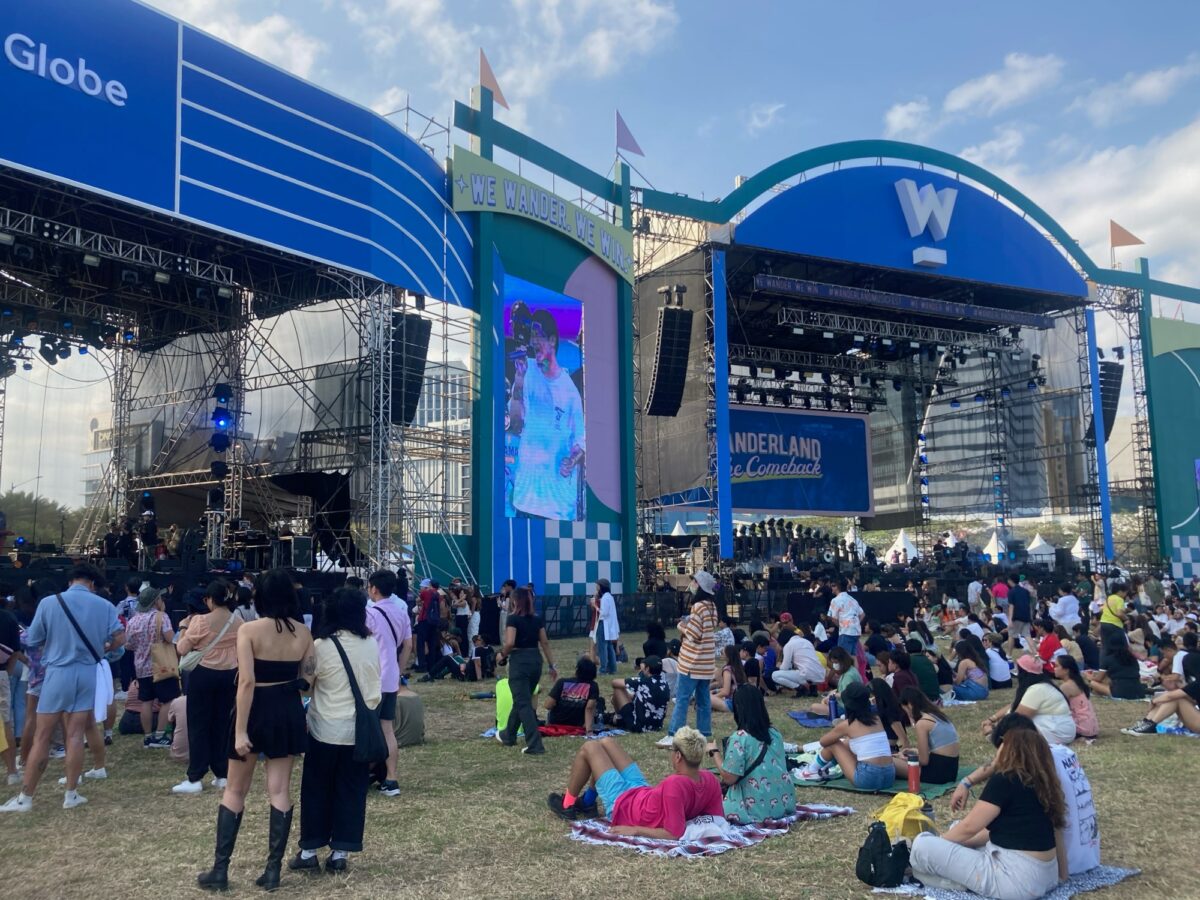
Wanderland was right, it was more than just a music festival
Besides the energetic show of the first day’s roster, what mesmerized us too was the live art of this year’s Wanderartists—Alaga, Amiel Rivera, Faith De Leos, and Wika Nadera.
The four artists were already working on their pieces when we got to the venue. As we passed by their murals, an abundance of props and colorful materials for their art greeted us. Witnessing their WIPs during the festival, we couldn’t help but think: What’s the inspiration behind their art? What’s their thought process like for these concepts?
To satisfy our curiosity, we talked to the creatives to know more about their mural and one-of-a-kind experience as part of Wanderland’s comeback.
(Note: The murals by the artists were works-in-progress, and not yet finished outputs, during the photo-taking.)
“I grew up in a community where I lived near a basketball court.” – Wika Nadera

Artist Wika Nadera shared that his art is a visual representation of his childhood. “My house was very close to a basketball court,” he said. Besides this connection, Wika defines this as a space that has been “translated into something very Filipino.”
“I have witnessed different mass gatherings in a basketball court. What made me interested about it is that we don’t really use it for basketball games alone. [It’s] for mass weddings, free vaccinations for people and pets, simbang gabi (night mass), karaoke, and more.”
[We Filipinos] look at it as a communal space. I find it really interesting.
Upon presenting his idea to the Wanderland team, Wika said that his art falls under the concept of “Maaraw Sa Ilalim ng Basketball Court” (A sunny day under a basketball court).
“Nagigising talaga ako sa iba’t ibang ingay ng basketball court. Nakakatuwa na iba-iba ‘yung maririnig mo. Biglang ingay ng kasal, tili ng bagong tuli, mayroon din ingay ng beauty pageant. Sa atin lang mayroon ‘nun eh.”
(Oftentimes, I wake up to the different noises of a basketball court. It’s funny how you’d hear different sounds in that space. Sometimes it’s the noise of a wedding, the scream of a newly circumcised kid, and also the noise of a beauty pageant. Only the Philippines has that culture.)
“The reason why my art is surrealistic is because I want to look beyond the basketball court’s space. [We Filipinos] look at it as a communal space. I find it really interesting,” he added.
For Wika, celebrating music and the arts again is the best part of Wanderland. “We were deprived for two years so this is very refreshing to me. Finally, we get to do these once again. It’s really revitalizing. It brings life to me.
“I want people to just enjoy my art.” – Faith De Leos
Fine arts student Faith De Leos relates her artwork to people’s surroundings and to what they see on a daily basis. She likes integrating experiences into her works, which she paints in vibrant colors to add depth to her work’s themes.
“[With Wanderland’s sports theme,] the best element I’d say in my art would be the drink. It’s fun and chill.” Faith said.
“I just really want to play around with my art. I like to make it brilliant and have fun. I want people to just enjoy my art and be able to relate with the things around them.”
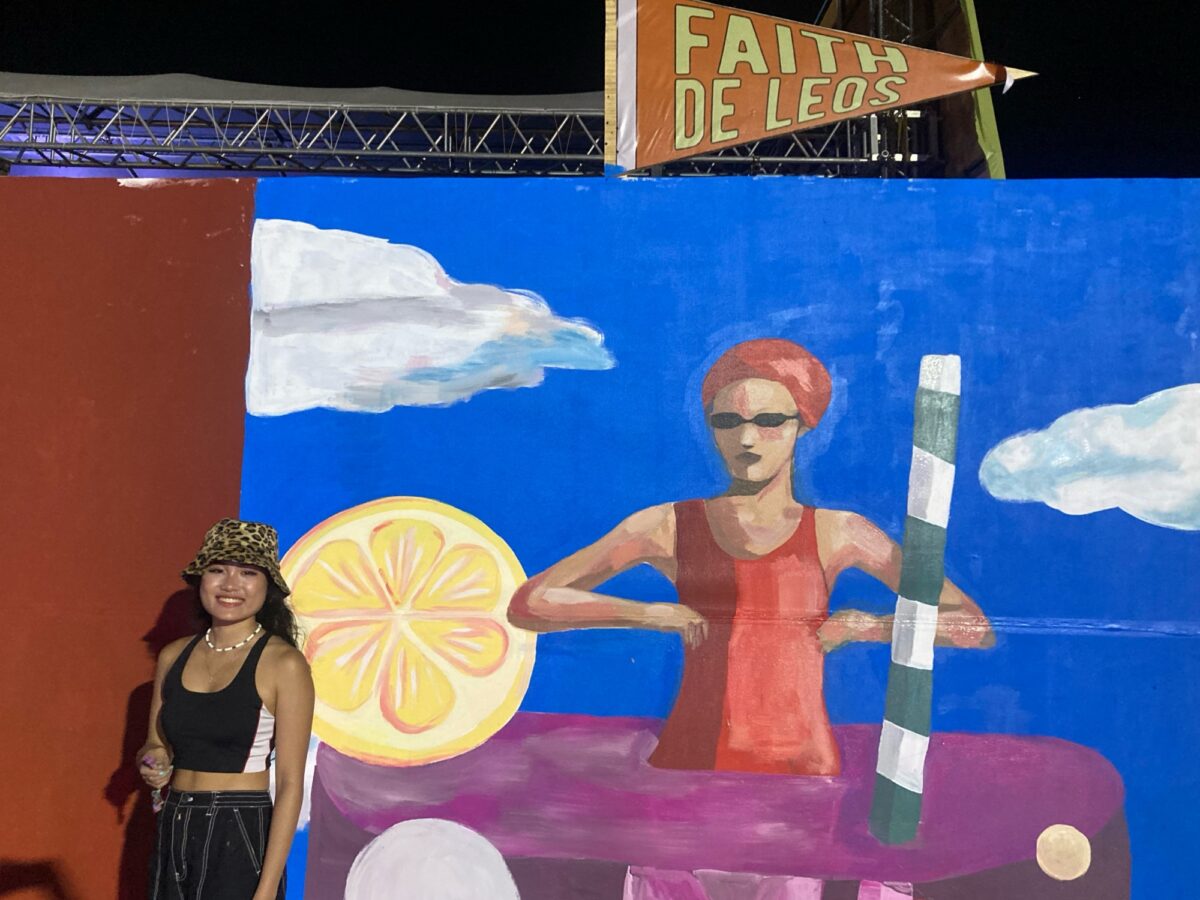
Currently, Faith studies visual communication at the University of the Philippines Diliman. She shared that the three-year preparation for Wanderland’s comeback represented growth in artists’ careers and the best opportunity to enjoy music and the arts together again.
“I’m happy that everything’s coming back together. That journey for us artists also [showed] how much we’ve developed and grown over those three years. It’s a big dream to be able to paint here at Wanderland.”
“These are my three Lumad students playing luksong tinik.” – Amiel Rivera
“I taught Lumad students back then,” visual artist and cultural worker Amiel Rivera introduced herself as she briefed us on her mural. “The main subject of my illustration is the three Lumad students of mine playing luksong tinik.”

According to Amiel, the children still manage to create childhood memories through games despite the present struggles in their community. “[Those moments] are a form of therapy for them.”
“As a young artist, it’s better to recognize urban poor communities, women, and especially youth. That’s one step that we can take to [address] issues.”
Being part of this year’s Wanderartists, Amiel shared that she’s grateful for being able to share the experiences of her students through art.
“I always try to look at my art as a healing force.” – Alaga
In terms of his art’s concept, artist Alaga had a clear vision “to subvert the oligarchical power that exists in sports,” specifically in basketball.
Growing up queer, Alaga was always forced to play basketball by his mom. “Just to prove you’re not gay, I’ll force you to join basketball,” he recalled.
Dealing with his past, Alaga incorporated this memory into his mural to sort things out. “I always try to look at my art as a healing force,” he said.
[For me,] it’s trying to balance femininity with masculinity, androgyny, and all sorts of gender expressions that I’m trying to welcome.
Besides this sentimental core in his work, another significant character of his art is the botanicals. He uses florals and other forms of botanicals as a visual language in his art.
“I always associate botanicals with Mother Nature, which is very feminine energy. [For me,] it’s trying to balance femininity with masculinity, androgyny, and all sorts of gender expressions that I’m trying to welcome.”
Onto his experience as a Wanderartist, Alaga remarked: “The artist empowerment, the support we get from Wanderland, it’s just a very heartfelt [experience]; co-creating with someone [like] Wanderland is really healthy.”

Capping off our short chat, the four artists shared with us their tips for all young and aspiring artists who wish to pursue an art career. Here are some notes:
- “Don’t underestimate your experiences. There is so much potential and stories to tell from your own story that you can share with the world.” – Wika Nadera
- “Pick up your pencil and try. There’s a lot of creativity in everyone. It’s a matter of trying.” – Faith De Leos
- “There’s always a specific class that you are representing. That is one of the important things you need to consider when making art.” – Amiel Rivera
- “Just continue to connect with yourself and look inwards. Always make sure to look at the bigger picture.” – Alaga
More than just a night of musical acts, Wanderland’s comeback is the certified MVP of the year. Not only did we witness our playlists come to life—we also got to revisit our own creativity through learning from Filipino artists themselves. We’re coming back for you, Wanderland.
Photos by Justine Rey and live artist poster from Wanderland


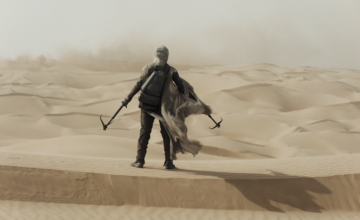













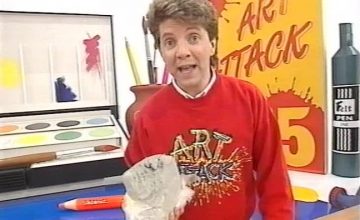



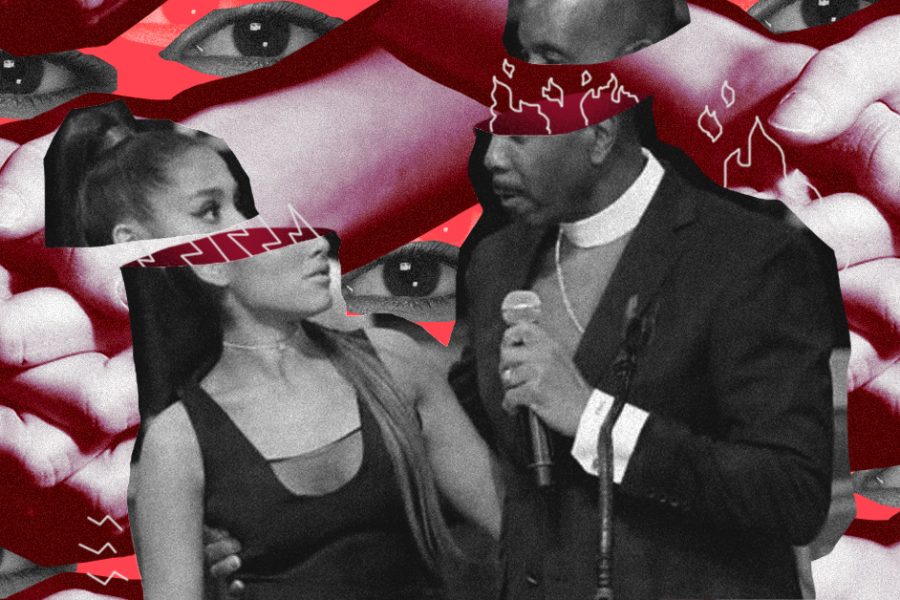



Comments